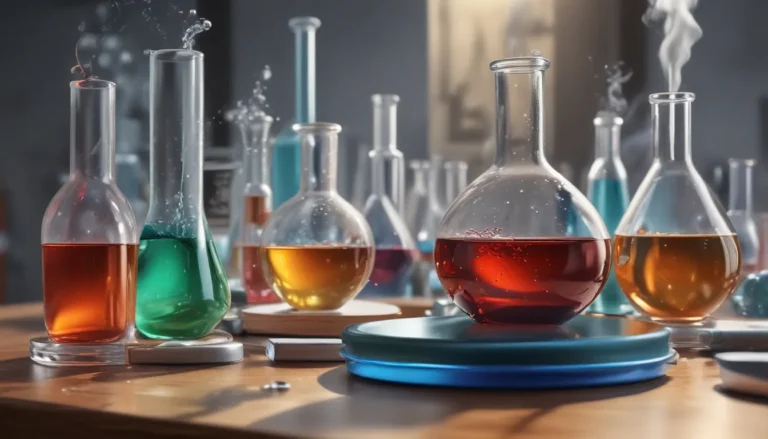A Note About Images: The images used in our articles are for illustration purposes only and may not exactly match the content. They are meant to engage readers, but the text should be relied upon for accurate information.
Polarity, a fundamental concept in chemistry, influences the behavior of molecules, chemical reactions, and the properties of substances. From determining solubility and intermolecular forces to shaping molecular structures, polarity plays a vital role in various branches of chemistry. In this article, we will delve into 17 astounding facts about polarity, unveiling its significance and diverse applications in the captivating realm of chemical interactions. Whether you have a passion for chemistry or a thirst for knowledge, get ready to be amazed by the captivating world of polarity!
Understanding the Essence of Polarity
- Polarity Defined: Polarity is the measure of an atom’s or molecule’s separation of electric charge, describing the distribution of electron density within a chemical species.
- Polar vs. Nonpolar Molecules: Polar molecules, like water (H2O), exhibit an uneven distribution of electrons, creating positive and negative poles. Nonpolar molecules, such as carbon dioxide (CO2) and methane (CH4), have an even distribution of electrons with no distinct positive or negative poles.
Exploring the Impact of Polarity
- Effects on Physical Properties: Polarity influences a molecule’s physical properties, including boiling point, melting point, and solubility. Polar substances typically have higher boiling and melting points compared to nonpolar substances.
- Determining Polarity: The polarity of a bond is determined by the difference in electronegativity between the atoms involved, with a greater difference indicating a polar bond.
- Understanding Electronegativity: Electronegativity measures an atom’s ability to attract electrons towards itself, with higher values indicating a stronger pull on electrons.
Delving Deeper into Polarity
- Polar Covalent Bonds: Formed when atoms with differing electronegativities share electrons unequally, resulting in partial positive and partial negative charges.
- Measuring Polarity: Dipole moments are used to measure the polarity of a molecule, with an arrow indicating the direction of electron flow from positive to negative ends.
- Solubility Rules: Like-dissolves-like rule governs solubility, where polar solvents dissolve polar solutes and nonpolar solvents dissolve nonpolar solutes.
Exploring the Role of Polarity
- In Chemical Reactions: Polarity influences a molecule’s reactivity in chemical reactions, attracting electrophiles to regions of high electron density and nucleophiles to regions of low electron density.
- In Biological Systems: Polarity plays a vital role in biological systems, such as cell membranes composed of lipids with polar heads and nonpolar tails for selective molecule transport.
- In Pharmacology: The polarity of a drug can affect its pharmacological properties, impacting absorption, distribution, metabolism, and excretion in the body.
Extending the Concept of Polarity
- Beyond Individual Bonds: Polarity extends to overall molecular structures, determining the polarity of organic compounds, crystals, and various materials.
- Influenced by External Factors: Temperature and pressure can alter polarity by changing the distribution of electron density within a molecule.
- Applications in Material Science: Polarity is essential in material science and engineering, from designing electronic devices to creating waterproof fabrics.
Embracing the Fascination of Polarity
In conclusion, polarity is a captivating concept with far-reaching implications in the world of chemistry. Understanding polarity opens doors to breakthroughs in drug development, material science, and environmental studies, enabling the creation of new compounds and innovative materials. By harnessing the power of polarity, scientists and researchers pave the way for exploration and discovery in the quest to unravel the mysteries of matter.
FAQs About Polarity
- What is polarity in chemistry? Polarity refers to the uneven distribution of electron density within a molecule, influencing its behavior and interactions with other substances.
- How is polarity determined? Polarity is determined by factors like electronegativity and molecular geometry, reflecting the molecule’s overall charge distribution.
- Why is polarity important in chemistry? Polarity influences solubility, intermolecular forces, and chemical properties, impacting the behavior of molecules in diverse chemical processes.
- How does polarity affect bonding? Polarity influences the nature of bonding, resulting in polar covalent bonds with partial charges and ionic bonds with complete charge transfer.
- Can polarity be altered? While inherent to a molecule’s structure, polarity can be influenced by external factors like temperature, pressure, and chemical reactions.
Unveiling the astounding facts about polarity offers a glimpse into the fascinating world of chemical interactions. As you delve deeper into the captivating subject of polarity, you’ll discover a realm filled with intrigue and endless possibilities for exploration. Embrace the essence of polarity and embark on a journey of discovery through the wondrous world of chemistry.






